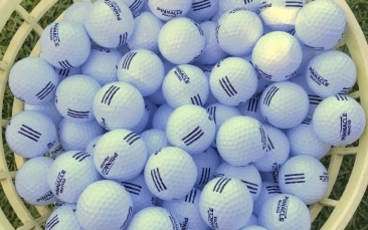Access The Best YOU
This article isn’t about getting better – it’s about something more important.
It’s about bringing out the best YOU
You see, most golfers are actually pretty happy with their best golf. The question is, how do we access our best golf more often? The answer to this is very different to making our best golf better – they often require different strategies.
Think about this – what score could you shoot if you hit YOUR best shots every time?
There’s great golf inside all of us – we just have to know how to unlock it more often
In fact, you could get close to the answer by trying out a game of Texas Scramble by yourself. Simply
- Go out with 3 or more golf balls (if possible)
- Hit each one
- Select the best result
- Repeat – hitting 3 (or more) shots from that best location
This shows you what your ultimate potential is, were you able to hit your best shots more often.
So, let’s have a look at some of the ways you can reach your potential.
Emotional Control
Nervousness, anger, frustration, fear…..
You can have a great swing mechanically, but then it can fall apart if you are experiencing any (or all) of the above emotions to a high level.
The reason for this? When our emotions change, we experience an increase in micro-variability (movement variability can increase, even on a subtle level). And, as small changes in the golf swing (1 degrees here, half and inch there) can dramatically affect the outcome, these emotions can wreak havoc on our game.
As I discussed in my article “The Tiny Golf Swing Change That Can Make Or Break Your Game” – small amounts of variability can really cost you in this game. Your swing may even look identical on camera.
Most golfers (and instructors) have always thought that pressure-proofing your game by building better swing mechanics was the way to go. This has an element of truth (better mechanics can have a more consistent outcome for any input variability). However, working on the other side of the coin – improving our emotional control – can also help.
Answer
There is certainly no shortcut to improving our ability to control our emotions, but it can be done. As a reformed “club snapper” myself, I can attest to this.
- Changing how you interpret outcomes through expectation management
- Improving your overall life philosophy
- Reminding yourself why you play this game
- Developing cognitive coping tools (like breathing exercises, or specific routines)
Can all help. I go through many of these ideas in my psychology section of Next Level Golf.
Attention Shifts
Locus of attention – a fancy way of saying “swing thoughts”
Imagine this scenario – you are on the range hitting shots. Your mind is fully focused on X swing move.
Then, you step on the first tee, ready yourself, and your mind focuses on the target.
Bam – a shank.
“Hey Bill, where was your mind focused on that shot?”
“The target”
“Where was your mind focused on the range?”
“I was concentrating on face strike location”
Do you see the issue?
Movement patterns are highly affected by and connected to thought processes. Similar to Pavlov’s dogs – when a golfer thinks of X, they will get more of X result. When they think of Y, they will get more of Y result.
Many golfers practice thinking of X, and play thinking of Y – and wonder why their game is not the same.
The answer
- Understand that what you think of can affect your movement and patterns that come out.
- Understanding what patterns emerge with varying swing thoughts
- Learning to control your focus of attention
- Learning how to tune out distractions to that focus
I go through locus of attention as well as how to identify your best swing thoughts for maximizing performance in Next Level Golf. NLG members can access those modules here;
Training Context
Context refers to how golf-like your practice is.
But, I’m practicing golf. What could get more golf-like than that?” I hear you say.
Well, in your practice do you have more of the elements on the left or right?
If your answers fell into the right hand column more often, your practice has low-context.
You may be able to hit the ball like Tiger Woods from a perfectly-manicured lie, raking and hitting the ball with the same club over and over. But that ain’t golf!
I like to balance the amount of repetitions with the context of the rep. For example;
- Hitting shots on the golf course is the most contextual of all, but you can only have perhaps one quality rep per 5-15 mins (of a given shot type)
- Hitting balls on the range has a high rep-count (you can hit 6 balls a minute), but each rep has a low context
Bridging this gap is where Transference training comes in – where we play games that (as closely as possible) simulate the demands of the real game of golf.
This could be as simple as picking a target area and trying to get 3 shots in a row (driver, 7 iron, then wedge) in that area. Or it could be much more elaborate and contain all of the contextual factors.
Picking a target area, like above, and then playing a game where pressure builds can help a lot in your ability to transfer your game to the course
In next level golf, I include many different training drills and exercises that increase context and balance out the context-rep ratio – as well as helping to improve certain specific issues (such as if you keep missing left/right).






